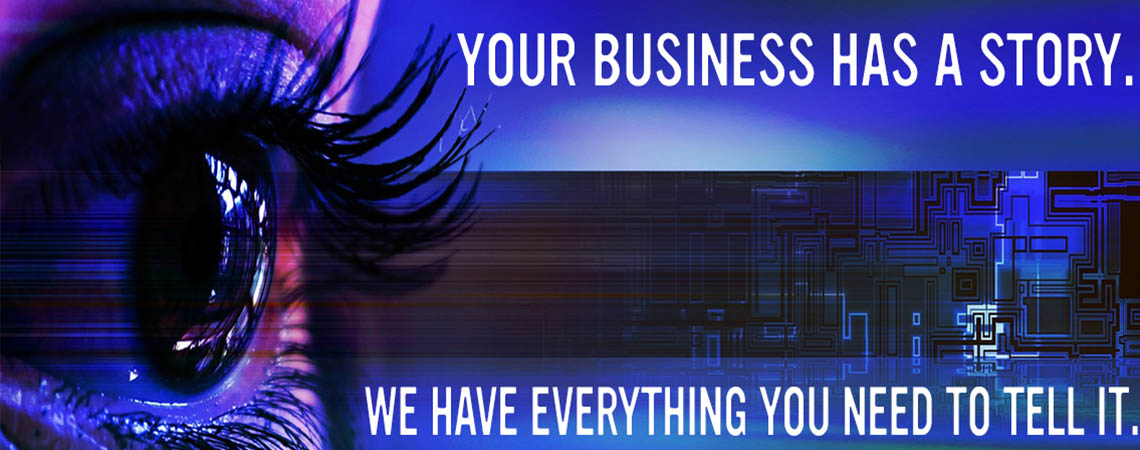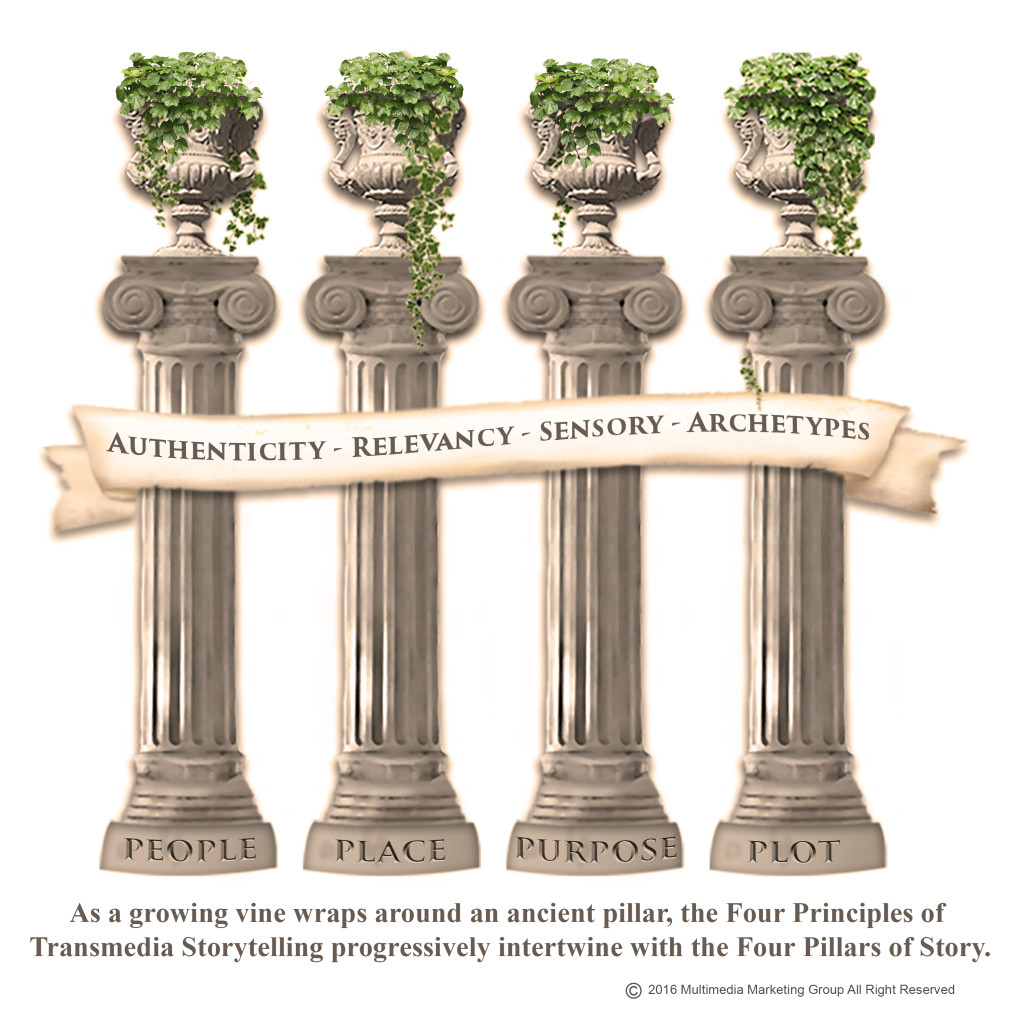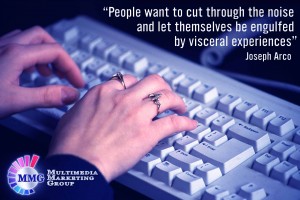
Author: Joseph Arco, President, Multimedia Marketing Group
Neuromarketing is on the global business community’s mind today. Few marketing firms offer the rare combination of top-tier Neuromarketing expertise and actual client applications to explain how to use this marketing exploration breakthrough in the real, not the theoretical, world. As online social networking sites are deeply embedded in the majority of Americans’ lives today, Transmedia Storytelling is a vital platform for your brand.
Scientific research in multiple fields, such as neuroscience, behavioral economics and psychology, has highlighted that consumers’ decisions are driven as much by gut instinct as considered thought. Yet how can marketers understand something as nebulous as “gut feel”?
 Authenticity
Authenticity
The Internet is a wonderful resource full of answers to just about any question you can come up with.
This is a time of exponential technological growth and incredibly easy access to seemingly endless information. However, many people today are trying to know everything about everything and are not being more selective in the information they are taking in. We spend our lives almost entirely online. People want to cut through the noise, and let themselves be engulfed by visceral experiences. They are skimming dozens of stories each morning, and choosing one which they, the viewer, can truly focus on. What if you could do that? Nothing is the same anymore. The current explosion of digital media technologies, social networks, and advanced analytics has literally changed the rules and Neuromarketing is a new field of marketing for Transmedia Storytelling.
Researchers measure changes in activity in parts of the brain to learn why consumers make the decisions they do, and what part of the brain is telling them to do so. One of the challenges is that, in some respects, all marketing is Neuromarketing, since marketing campaigns are almost always trying to produce some kind of brain activity that will lead to a desired behavior. Neuromarketing procedures are based on scientific principles about how humans really think and decide. This involves brain activity that our conscious minds are not aware of. Your brand equals ideas in the mind that draw strength from the connections they make. Neuromarketing triggers provide powerful methods for measuring brand associations. Once your brand is out in the marketplace it is much like a person’s reputation, drawing upon the four pillars of storytelling. Here is the nitty-gritty. We want to go beyond pixels. We want to feel, smell and touch. Striking story images are triggers for that very reason. The more senses a Transmedia Story engages, the more attention it receives and the more information the audience retains. Our minds are full of an endless visual library, one that influences everything we see and how we see it.
The Transmedia Storytelling Approach through Neuromarketing

Transmedia Storytelling focuses on the brain’s top-down processing. Think about when you’re listening to someone tell a story: You think about the main themes and the bottom-line summary of what is being said. In top-down processing, your brain is active first. A thought leads to emotions (happy, excited, grateful, and curious) and then a response in the body (increased heart rate, smile, arms reaching out). In comparison, bottom-up processing is where you pay close attention to the specific details to understand what’s being said. That’s important because compelling filmed presentations master the same fundamentals, but if you get stuck in the way of thinking about your brand, it’s tough to be a visionary storyteller. To help improve the brain’s ability to think in these broader, bigger ways, we will concentrate on three areas of focus.*
1. Strategic Story Attention
A filmed story focus is essential for memory and learning by the viewer. The increase in emotional understanding and deep learning happens when we stop trying to tell several stories at once. Viewers block irrelevant or extraneous elements and better understand root issues however if you minimize multiple storylines you assist the viewer in getting there quicker and the root of your communication resonates more effectively. Because your brain uses information about sights, sounds, textures, smells, tastes, and movement in an organized way, you assign meaning to your sensory experiences, and you know how to respond and behave accordingly.
2. Emotional Integration with your Story
This area is where your story has the most impact. Integrative reasoning hones mental tools that exert cognitive control to “zoom in” to quickly scan the critical details, and then quickly reprocess that information into global ideas by “zoom out” strategies. This evaluates how those details fit into the big pictures. By creating emotional connections, the viewer automatically learns to reach broader perspectives and construct thought applications through toggling their focus, otherwise known as “zooming deep and wide”.
3. Mental Story Flexibility
Being able to consider varied viewpoints and perspectives is another element of improving Transmedia Storytelling sharpness and create a new cognitive function for your communication. Rather than processing information in the same way, adopting different perspectives and using information in new ways is important to improve key aspects of the viewer’s brain performance and hence target the viewer’s decision making capabilities.
Shifting back and forth between that “big-picture” perspective and the nitty-gritty of what it means to us helps the viewer gain greater understanding and learn more. If the story can move forward through the “whole –part- whole,” approach, the viewer is taking in information, abstracting very quickly, and applying it. With this approach we get brain change very dramatically, which of course is the right step toward your success.
In the 2007 book entitled Authenticity: What Consumers Really Want, James Gilmore and Joseph Pine argue that contemporary industrial and information societies are being commodified and virtualized, with everyday life becoming saturated with “lethal levels of inauthenticity.” To get a sense of a realist perspective, we need look to the Oxford English Dictionary authenticity is first defined as being “in accordance with fact, as being true in substance.”
 The Tools of Neuromarketing for Transmedia Storytelling
The Tools of Neuromarketing for Transmedia Storytelling
Neuromarketing uses a variety of tools and techniques to measure consumer responses and behavior.
These include everything from relatively simple and inexpensive approaches, such as eye tracking (measuring eye gaze patterns), analyzing facial expressions, and behavioral experiments (for example, seeing how changes in product displays affect a consumer’s choices), to more complex, sensor-based approaches, including biometrics (body signal measures) that measure perspiration, respiration, heart rate, and facial muscle movement (electromyography [EMG]), as well as neurometrics (brain signal measures) that measure electrical activity (electroencephalography [EEG]), and blood flow (functional magnetic resonance imaging [fMRI]) in the brain.
AUTHORS INSIGHT:
Concluding Thoughts to Help You Navigate This White Paper Series
By understanding the relevant parts of your story as it lives in the hearts and minds of your viewers, you then can identify niche content areas that your brand can own in the marketplace you serve.
In light of video’s increasing prevalence on social networks, this series of White Papers are created for you, to provide insight to the new world of Transmedia marketing strategies, including best practices, ideas and case studies, and real-world specifications.
Transmedia Storytelling is an increasingly accepted way to achieve management goals through the power of narrative as thought leaders.
The Power of Narrative
Do stories really have a role to play in the business world?
Many executives operate with a particular mind-set. Analysis is what drives business thinking. It cuts through the fog of myth, gossip, and speculation to get to the hard facts. It goes wherever the observations and premises and conclusions take it. Its strength lies in its objectivity, and its impersonal nature, however stated, Facts tell, butStories sell.
Yet this strength of fact is also a weakness. Analysis might excite the mind, but it hardly offers a route to the heart. And that’s where one must go if we are to motivate people not only to take action but to do so with energy and enthusiasm. At a time when corporate communication often requires disruptive change, leadership involves inspiring people to act in unfamiliar, and often unaccustomed, ways. Mind-numbing cascades of numbers or daze-inducing PowerPoint slides won’t achieve this goal. Even the most logical arguments usually won’t do the trick.
But effective Transmedia Storytelling often does. In fact, in certain situations nothing else works. Although good business arguments are developed through the use of numbers, they are typically approved on the basis of a story—that is, a marketing narrative that links a set of events in some kind of causal sequence. Transmedia Storytelling can translate desiccated and abstract numbers into compelling pictures of a leader’s goals.
“Story outcomes” are the basis of what behaviorists define as a sequence of a decision making order. We first perceive, based on incoming observational thoughts that are then turned into beliefs which provide an outcome of attitudes. Put another way, Thoughts = Perceptions = (goes into) Beliefs = (turns into) Attitudes.
In conclusion, The Power of Narrative is as old as civilization. It not only has a process of implementing sequential, chronological information, but it also has the most important element of synthesizing information far different then facts alone. Combining the use of digital technology with communication you now have the ability to create a platform of Transmedia marketing in a whole new way.
 Joe Arco
Joe Arco
President
Email: joe@mmg-1.com
 For more about Transmedia Marketing visit https://mmg-1.com/marketing.html
For more about Transmedia Marketing visit https://mmg-1.com/marketing.html
Multimedia Marketing Group
6048 Broadcast Parkway
Loves Park, IL 61111
779-774-3188
 Authenticity
Authenticity The Tools of Neuromarketing for Transmedia Storytelling
The Tools of Neuromarketing for Transmedia Storytelling
Recent Comments